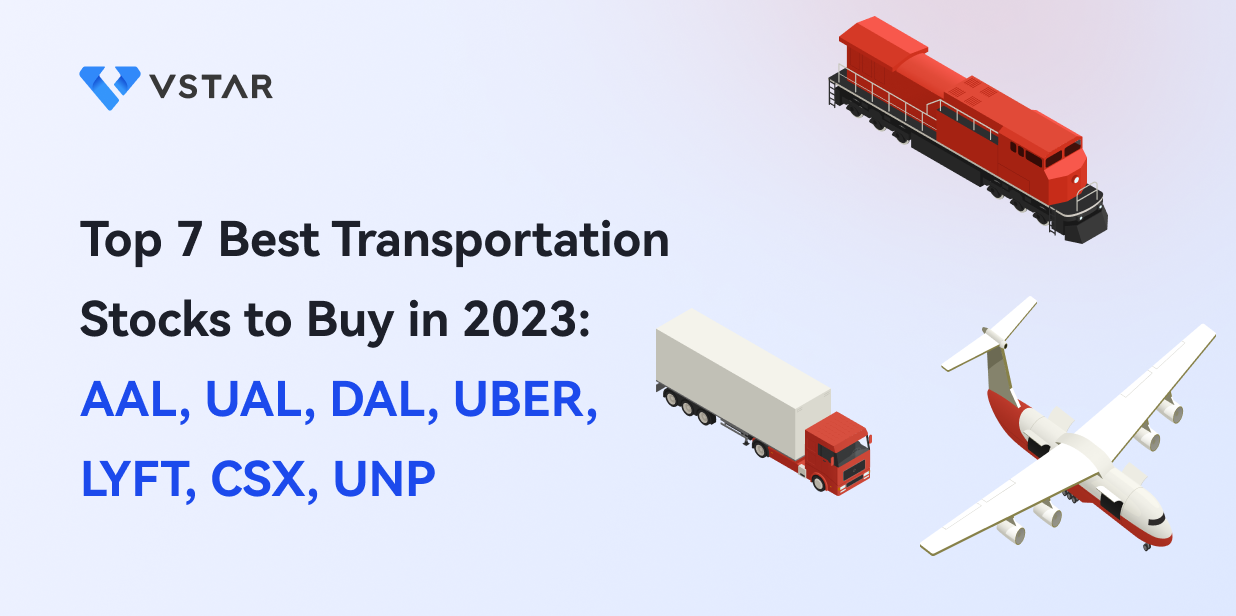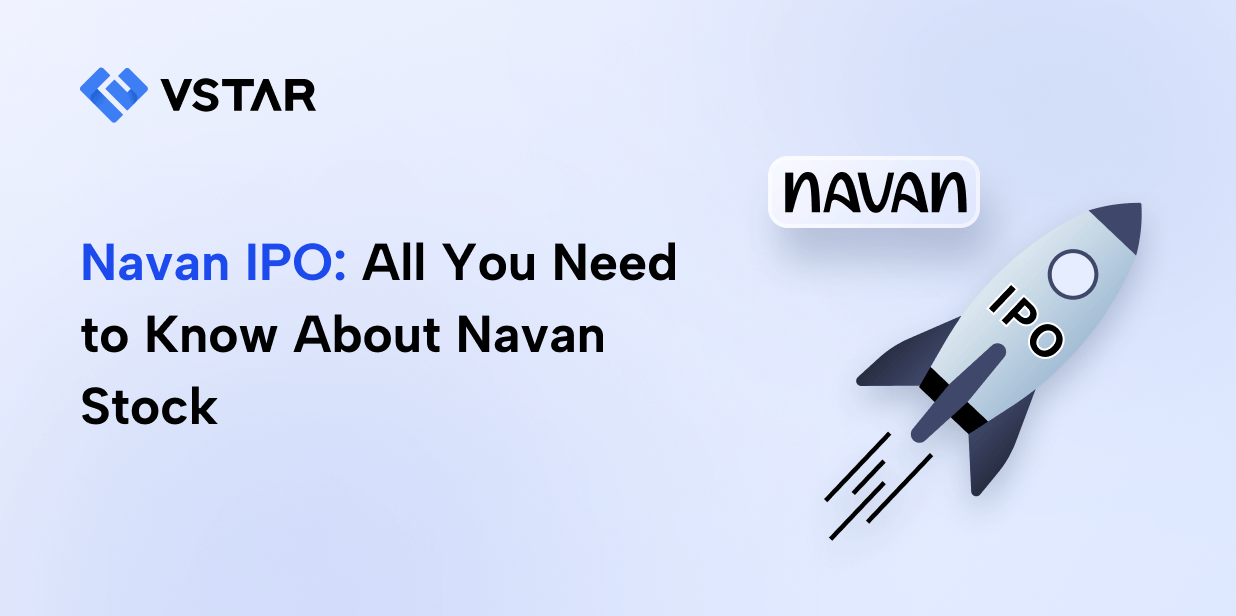The transportation industry is one of the most vital sectors of the global economy. It encompasses various modes of moving people and goods from one place to another, such as airlines, railroads, trucking, shipping, and ridesharing. The transportation industry is also closely linked to other sectors, such as tourism, e-commerce, energy, and manufacturing.
Investing in the transportation industry can be an intelligent way to diversify your portfolio and take advantage of the growing demand for mobility and logistics. Transportation stocks can offer attractive returns, dividends, and growth potential as the world recovers from the pandemic and adapts to new trends and technologies. However, not all transportation stocks behave equally. Some may face more challenges and risks than others due to competition, regulation, costs, and customer preferences.
This article will review the top 7 best transportation stocks to buy in 2023. We believe these companies have substantial competitive advantages, solid financials, and promising growth prospects in their respective segments of the transportation industry. We will also compare their performance, valuation, and dividend yields to help you make informed investment decisions. Finally, we will show you how to trade CFD transportation stocks with VSTAR, a globally regulated trading platform with low fees, deep liquidity, and user-friendly features.
Major Airline Stocks (AAL, UAL, and DAL) Poised for Gains as Travel Recovers
The airline industry is one of the hardest-hit sectors by the COVID-19 pandemic. Travel restrictions, lockdowns, and health concerns have caused a sharp decline in passenger demand and revenue for most airlines. However, as vaccination rates increase and travel restrictions ease, the airline industry should bounce back strongly in 2023 and beyond.
Among the major U.S. airlines, we have selected three stocks that we perceive have the best potential to benefit from the travel recovery: American Airlines Group Inc. (NASDAQ: AAL), United Airlines Holdings Inc. (NASDAQ: UAL), and Delta Air Lines Inc. (NYSE: DAL). These are the largest airlines in the U.S. by revenue and market share, and they have a diversified network of domestic and international routes. They also have taken various measures to reduce costs, improve liquidity, and enhance customer experience during the pandemic.
This section will briefly overview each airline and its stock performance, current operations and financials, recent developments and news, and analysis of strengths, weaknesses, opportunities, and threats. Based on our research and analysis, we will also give you some reasons to invest in each airline stock.
American Airlines Group Inc. (NASDAQ: AAL)
American Airlines Group Inc. (NASDAQ: AAL) is one of the largest airlines in the world, serving more than 300 destinations in over 50 countries. The company operates a fleet of nearly 1,000 aircraft and employs about 123,000 people. AAL stock has been recovering from the pandemic-induced slump, gaining almost 13% year-to-date as of May 31, 2023.
The company reported a net loss of $438 million in the first quarter of 2023 but also generated a positive cash flow of $3.3 billion at the same time, thanks to the improvement in domestic leisure and business travel demand. The company also saw a strong performance in its cargo segment, contributing $223 million in revenue.
American Airlines has taken several steps to enhance its liquidity, reduce debt, and optimize its network. The company raised $10 billion in financing backed by its AAdvantage loyalty program, which helped it pay off its $7.5 billion loan from the U.S. Treasury. The company also announced several new routes and partnerships, such as the codeshare agreement with JetBlue Airways and the expanded alliance with Alaska Airlines.
However, the company still faces some challenges and risks, such as the uncertainty around the COVID-19 variants, the high fuel costs, the competitive pressure from low-cost carriers, and the potential regulatory hurdles for its Northeast alliance with JetBlue. The company also trades at a discount to its peers, with a price-to-earnings ratio of 5.37 compared to the industry average of 8.4.
Despite these challenges, American Airlines has some strengths and opportunities that make it an attractive investment option for transportation stock investors. The company has a loyal customer base, a diversified revenue stream, a strong domestic network, and a potential for margin expansion as travel recovers. The company expects to achieve positive earnings before interest, taxes, depreciation, and amortization (EBITDA) by the second quarter of 2023.
United Airlines Holdings Inc. (NASDAQ: UAL)
United Airlines Holdings Inc. (NASDAQ: UAL) is a global airline company that operates almost 5,000 flights daily to over 300 destinations across six continents. The company has a fleet of about 800 aircraft and employs more than 90,000 people. UAL stock has been rebounding from the pandemic-induced downturn, rising nearly 27% year-to-date as of May 31, 2023.
The company reported a net loss of $194 million in the first quarter of 2023 but also achieved a positive core cash flow of $1.3 billion, driven by the recovery in travel demand. The company also improved its operating margin by 18.2% compared to the first quarter of 2022, thanks to its global network, premium seating upgrades, and cost-cutting initiatives.
United Airlines has been pursuing several strategies to enhance its liquidity, reduce its debt, and optimize its network. The company raised $9 billion in debt financing secured by its loyalty program MileagePlus, which helped it repay its $520 million loan from the U.S. Treasury. The company also announced several new routes and partnerships, such as the joint venture with Air New Zealand and the codeshare agreement with Qatar Airways.
The company still faces challenges and risks, such as high fuel costs, competitive pressure from low-cost carriers, and the potential regulatory hurdles for its slot swap deal with Alaska Airlines. The company also trades at a premium to its peers, with a price-to-earnings ratio of 8.12.
In spite of these challenges, United Airlines has some strengths and opportunities that make it an attractive investment option for transportation stock investors. The company has a loyal customer base, a diversified revenue stream, a strong international network, and a potential for innovation in electric vertical takeoff and landing (eVTOL) aircraft.
Delta Air Lines Inc. (NYSE: DAL)
Delta Air Lines Inc. (NYSE: DAL) is a leading airline company that operates over 5,000 daily flights to more than 300 destinations in over 50 countries. The company has a fleet of close to 950 aircraft and employs more than 90,000 people. DAL stock has been showing signs of recovery from the pandemic-induced crisis, rising about 10.06% year-to-date as of May 31, 2023.
The company reported a net loss of $277 million in the first quarter of 2023 but also achieved an operating cash flow of $2.2 billion, reflecting the improvement in travel demand. The company also improved its operating margin by 74% compared to the first quarter of 2022, thanks to its history of superior service, partnerships, and low debt, enabling greater flexibility.
Delta Air Lines has pursued several strategies to enhance its liquidity, reduce debt, and optimize its network. The company raised $9 billion in debt financing secured by its SkyMiles loyalty program, which helped it repay its $3 billion loan from the U.S. Treasury. The company also announced several new routes and partnerships, such as the joint venture with WestJet and the codeshare agreement with LATAM Airlines.
The company, however, still faces some challenges and risks, such as high fuel costs, the competitive pressure from low-cost carriers, and the potential regulatory hurdles for its slot swap deal with WestJet. The company also trades at a premium to its peers, with a price-to-earnings ratio 7.67.
Even with these challenges, Delta Air Lines has some strengths and opportunities, making it an attractive investment option for transportation stock investors. The company has a loyal customer base, a diversified revenue stream, a strong domestic and international network, and a potential for innovation in areas such as sustainable aviation fuel and carbon neutrality.
Ridesharing Companies (Uber and Lyft) Transform Mobility but Face Regulatory Challenges
Another segment of the transportation industry that has been transforming mobility is ridesharing. Companies like Uber and Lyft offer convenient and affordable alternatives to traditional taxis and public transportation, using technology to connect drivers and passengers. However, these companies face regulatory challenges in many markets, as they must comply with different safety, labor, and taxation rules and regulations. In this section, we will examine the performance, operations, and prospects of Uber and Lyft, two of the leading ridesharing companies in the world.
Uber Technologies Inc. (NYSE: UBER)
Uber Technologies Inc. (NYSE: UBER) is a global mobility platform that offers ridesharing, food delivery, freight, and other services. The company operates in over 10,000 cities across 70 countries and has over 130 million monthly active users. UBER stock has been performing well, gaining about 51% year-to-date as of May 31, 2023.
The company reported a net loss of $157 million in the first quarter of 2023 but also achieved record gross bookings of $31.4 billion, up 19% year-over-year. The company also improved its adjusted EBITDA margin by 12% compared to the first quarter of 2022, thanks to its platform innovation, leadership, and expansion into delivery, freight, and autonomous vehicles.
Uber has been pursuing several strategies to enhance its liquidity, reduce its debt, and optimize its platform. The company raised $1.6 billion in convertible notes offering, which helped it repay its $500 million term loan. The company also announced several new initiatives and partnerships, such as the acquisition of Drizly, the launch of Uber Pass and Uber Reserve, and the collaboration with Walgreens and Moderna.
Still, the company faces challenges and risks, such as the high costs of driver incentives and safety measures, the competitive pressure from rivals like Lyft and DoorDash, and the regulatory issues in various markets regarding worker classification, taxation, and data privacy. The company also trades at a high valuation, with a price-to-sales ratio of 8.9 compared to the industry average of 2.2.
Despite these challenges, Uber has some strengths and opportunities that make it an attractive investment option for transportation stock investors. The company has a loyal user base, a diversified revenue stream, a strong brand recognition, and a potential for growth in emerging markets and new segments.
Lyft Inc. (NASDAQ: LYFT)
Lyft Inc. (NASDAQ: LYFT) is a major player in the ridesharing industry, serving over 600 cities in the U.S. and Canada. The company also provides bike, scooter, car rental, and transit options. The company has a large customer base of over 22 million active riders and over 1 million drivers. LYFT stock has been underperforming, dropping about 24% year-to-date as of May 31, 2023.
The company posted a net loss of $427 million in the first quarter of 2023 but also recorded its highest revenue of $609 million, up 7% year-over-year. The company increased its adjusted EBITDA margin by 15 percentage points compared to the first quarter of 2022, thanks to its focus on the North American market and its partnerships that opened up opportunities for global expansion over time.
Lyft has been implementing several strategies to improve its liquidity, lower its debt, and enhance its platform. The company secured $2 billion in convertible notes offering, which helped it pay off its $600 million term loan. The company also launched several new initiatives and partnerships, such as Lyft Pink and Lyft Pass, the divestiture of its self-driving unit to Toyota, and the cooperation with CVS Health and YMCA.
However, the company still faces some hurdles and risks, such as the unpredictability of the COVID-19 pandemic, the high expenses of driver incentives and safety measures, the intense competition from rivals like Uber and DoorDash, and the regulatory issues in various markets regarding worker classification, taxation, and data privacy. The company also has a high valuation, with a price-to-sales ratio of 5.1 compared to the industry average of 2.2.
Lyft presents an attractive investment opportunity for transportation stock investors, as it has some strengths and opportunities in the ridesharing industry. The company has a strong focus on the North American market, a cost-effective platform, a high-quality service, and a potential for growth in emerging markets and new segments. The company also plans to achieve positive adjusted EBITDA by the third quarter of 2023.
Freight Rail Leaders (CSX and Union Pacific) Poised to Gain from E-commerce Surge
Another segment of the transportation industry that is poised to gain from the ecommerce surge is freight rail. Companies like CSX Corporation and Union Pacific Corporation operate extensive rail networks that transport various goods and materials across the U.S. As ecommerce demand increases, so does the need for efficient and reliable freight transportation. In this section, we will examine the performance, operations, and prospects of CSX and Union Pacific, two of the leading freight rail companies in the world.
CSX Corporation (NASDAQ: CSX)
CSX Corporation (NASDAQ: CSX) is one of the largest rail-based transportation companies in the U.S., operating over 21,000 miles of track in 23 states and two Canadian provinces. The company transports various commodities, such as coal, chemicals, intermodal containers, automotive products, and agricultural products. CSX stock has been performing well, gaining about 14% year-to-date as of May 31, 2023.
The company reported a net income of $987 million in the first quarter of 2023, up 14.9% year-over-year. Also, the company achieved record revenue of $3.71 billion, up 8.6% from the prior-year period. The company attributed its strong results to its rail network efficiency, cost discipline, and resilience, which supported stable returns amid challenging market conditions.
CSX has been pursuing several strategies to improve its operations, customer service, and profitability. The company invested $1.7 billion in capital expenditures in 2022, mainly for infrastructure maintenance, network capacity expansion, and locomotive acquisitions. The company also announced several new initiatives and partnerships, such as the acquisition of Quality Carriers, the launch of CSX Intermodal Link, and the collaboration with Norfolk Southern and Amtrak.
The company still faces some challenges and risks, such as the uncertainty around the COVID-19 pandemic, the regulatory changes affecting its coal business, the weather events disrupting its service delivery, and the customer changes impacting its freight mix. The company also has a high debt-to-equity ratio of 1.3 compared to the industry average of 0.9.
Despite these challenges, CSX has some strengths and opportunities that make it an attractive investment option for transportation stock investors. The company has a diversified revenue stream, a strong market position, a loyal customer base, and a potential for growth in ecommerce demand. The company also pays a quarterly dividend of $0.11 per share, yielding 1.4% annually.
Union Pacific Corporation (NYSE: UNP)
Union Pacific Corporation (NYSE: UNP) is one of the largest railroad companies in the world, operating over 32,000 miles of track in 23 states in the western two-thirds of the U.S. The company transports various commodities, like agricultural products, automotive products, chemicals, coal, industrial products, and intermodal containers. UNP stock has been lagging, losing about 3% year-to-date as of May 31, 2023.
The company reported a net income of $1.63 billion in the first quarter of 2023, flat year-over-year. The company also generated revenue of $6.06 billion, up 3.3% from the prior-year period. The company attributed its modest results to its rail links with Mexico and ports that enabled competitive advantage amid supply chain disruptions and weather challenges.
Union Pacific has been pursuing several strategies to improve its operations, customer service, and profitability. The company invested $2.9 billion in capital expenditures in 2022, mainly for infrastructure maintenance, network capacity expansion, and locomotive acquisitions. The company also announced several new initiatives and partnerships, such as the launch of Union Pacific Clean Air Express, the collaboration with Canadian National Railway and Kansas City Southern, and the expansion of its intermodal service.
However, the company still faces some challenges and risks, such as the uncertainty around the COVID-19 pandemic, the rising costs of fuel and labor, the potential accidents and derailments affecting its service delivery, and the customer changes impacting its freight mix. The company also faces regulatory issues affecting its coal business, trade policy affecting its cross-border traffic, and environmental issues affecting its sustainability goals.
Union Pacific has specific strengths and opportunities that make it an attractive investment option for transportation stock investors. The company has a diversified revenue stream, a strong market position, a loyal customer base, and a potential for growth in ecommerce demand. The company also pays a quarterly dividend of $1.30 per share, yielding 2.7% annually.
Comparison of Top 7 Best Transportation Stocks
Comparison of Financials, Growth Potential, and Dividend Yields
The table below summarizes some key financial metrics and dividend yields for the top 7 transportation stocks as of Dec 17, 2022.
|
Company |
Stock Price |
Market Cap |
P/E Ratio |
EPS Growth (5Y) |
Dividend Yield |
|
American Airlines Group Inc. (AAL) |
$16.77 |
$10.4B |
N/A |
-42.9% |
N/A |
|
United Airlines Holdings Inc. (UAL) |
$44.90 |
$14.3B |
N/A |
-38.6% |
N/A |
|
Delta Air Lines Inc. (DAL) |
$38.67 |
$24.5B |
N/A |
-35.8% |
N/A |
|
Uber Technologies Inc. (UBER) |
$37.40 |
$69.8B |
N/A |
23.1% |
N/A |
|
Lyft Inc. (LYFT) |
$38.76 |
$12.9B |
N/A |
29.4% |
N/A |
|
CSX Corporation (CSX) |
$32.31 |
$65.9B |
15.9 |
6.1% |
1.36% |
|
Union Pacific Corporation (UNP) |
$191.91 |
$121.2B |
17.6 |
8.3% |
2.62% |
The above table shows that:
● The major airline stocks (AAL, UAL, and DAL) are still recovering from the pandemic and have negative earnings per share (EPS) growth and no dividends.
● The ridesharing companies (UBER and LYFT) have positive EPS growth but are also unprofitable and do not pay dividends.
● The freight rail leaders (CSX and UNP) have positive EPS growth and profitability and pay dividends to shareholders.
Risks and Challenges Facing Each Company
The transportation industry faces various risks and challenges that could affect the performance of each company, such as:
● The resurgence of COVID-19 variants and travel restrictions that could dampen the demand for air travel and ridesharing services.
● Regulatory changes and environmental pressures could increase transportation companies' costs and compliance requirements.
● Intense competition from other railroads and modes of transportation that could erode the market share and pricing power of transportation companies.
● Cybersecurity risks and data breaches that could compromise the safety and privacy of customers and operations.
● Supply chain disruptions and labor shortages could affect transportation services' availability and quality.
Pros and Cons of Investing in Each Stock
|
Company |
Pros |
Cons |
|
American Airlines |
Recovery potential, low valuation |
High debt, low customer satisfaction |
|
United Airlines |
Global network, innovation |
High operating costs, safety incidents |
|
Delta Air Lines |
Superior service, partnerships |
Dependence on business travel, inflation |
|
Uber |
Platform innovation, expansion |
Legal battles, negative cash flow |
|
Lyft |
North American focus, partnerships |
Limited scale, regulatory issues |
|
CSX |
Network efficiency, cost discipline |
Coal decline, weather disruptions |
|
Union Pacific |
Market position, dividend |
Trade policy, accidents, and derailments |
How to Invest in Transportation Stocks
There are three main ways to invest in transportation stocks: holding the share, buying an option, or trading a contract for difference (CFD).
● Holding the share means buying and owning the stock of a transportation company. This gives you the right to receive dividends and vote on corporate matters. However, holding the share exposes you to the entire risk of price fluctuations and requires a large initial capital outlay.
● Buying an option means purchasing the right, but not the obligation, to buy or sell a transportation stock at a specified price within a certain period. This gives you leverage and flexibility to profit from different market scenarios. However, buying an option also involves paying a premium and facing time decay, which erodes the value of the option as it approaches expiration.
● Trading a CFD means agreeing with a broker to exchange the difference between a transportation stock's opening and closing prices. This gives you access to margin trading, which allows you to trade with a small fraction of the full value of the position. However, trading a CFD also involves paying fees and interest charges and facing margin calls, which require you to deposit more funds or close your position if the market moves against you.
Trading a CFD has advantages over holding the share or buying an option, such as lower costs, higher returns and greater diversity. You can trade transportation stocks CFD with low fees, leverage and access to various markets and assets.
Why Trade Transportation Stocks CFD with VSTAR?


VSTAR is a global regulated trading platform that offers CFD trading on over 1000 markets of currencies, stocks, indices, gold, and oil. Here are some reasons why you should trade transportation stocks CFD with VSTAR:
● Lowest Trading Fee: VSTAR charges zero commission and super-tight spreads to help you get more profit.
● Deep Liquidity: VSTAR provides reliable and fast order execution with minimal slippage and re-quotes.
● Global Regulated and Secure: VSTAR is authorized and regulated by the Cyprus Securities and Exchange Commission (CySEC) under license number 409/22. It is also a Cyprus Investor Compensation Fund member and complies with the European Regulatory Framework of MiFiD II.
● User-Friendly App for Both Pro Traders and Beginners: VSTAR has an easy-to-use interface that allows you to trade anytime, anywhere, with your mobile device. You can start trading with a minimum deposit of only $50 and enjoy negative balance protection. You can also catch trading opportunities on the Popular real-time markets and explore $100,000 risk-free demo accounts.
How to Trade Transportation Stocks CFD with VSTAR - Quick Guide
Trading transportation stocks CFD with VSTAR is simple and convenient. Here are some steps to follow:
1. Download the VSTAR app from Google Play or App Store and register for an account.
2. Verify your identity and deposit funds using your preferred payment method, such as Visa, Mastercard, International Bank Wire, Tether, Skrill, Netteller, SticPay, Perfect Money, etc.
3. Choose a transportation stock from the list of available markets and tap on it to open a trading ticket.
4. Enter your desired trade size, stop loss and take profit and leverage levels. You can also set up alerts and notifications for your trade.
5. Tap on Buy or Sell to open your position. You can monitor your trade on the Positions tab and close it anytime by tapping Close.
Conclusion
In this article, we examined seven transportation stocks that could offer attractive investment opportunities in 2023. These stocks represent different transportation industry segments, such as airlines, ridesharing, and railroads, and have different strengths, weaknesses, and growth potential. The transportation industry is a vital sector of the global economy severely impacted by the COVID-19 pandemic but should bounce back gradually as travel demand and supply chain activity recover.
Investors interested in trading transportation stocks should conduct thorough research and analysis of each stock, diversify their portfolio across different segments and regions, and manage their risk effectively using various tools and strategies. They can also benefit from trading transportation stocks CFD with VSTAR to enjoy low fees, deep liquidity, and a user-friendly app. Start investing in transportation stocks today. Download the VSTAR app now!


















